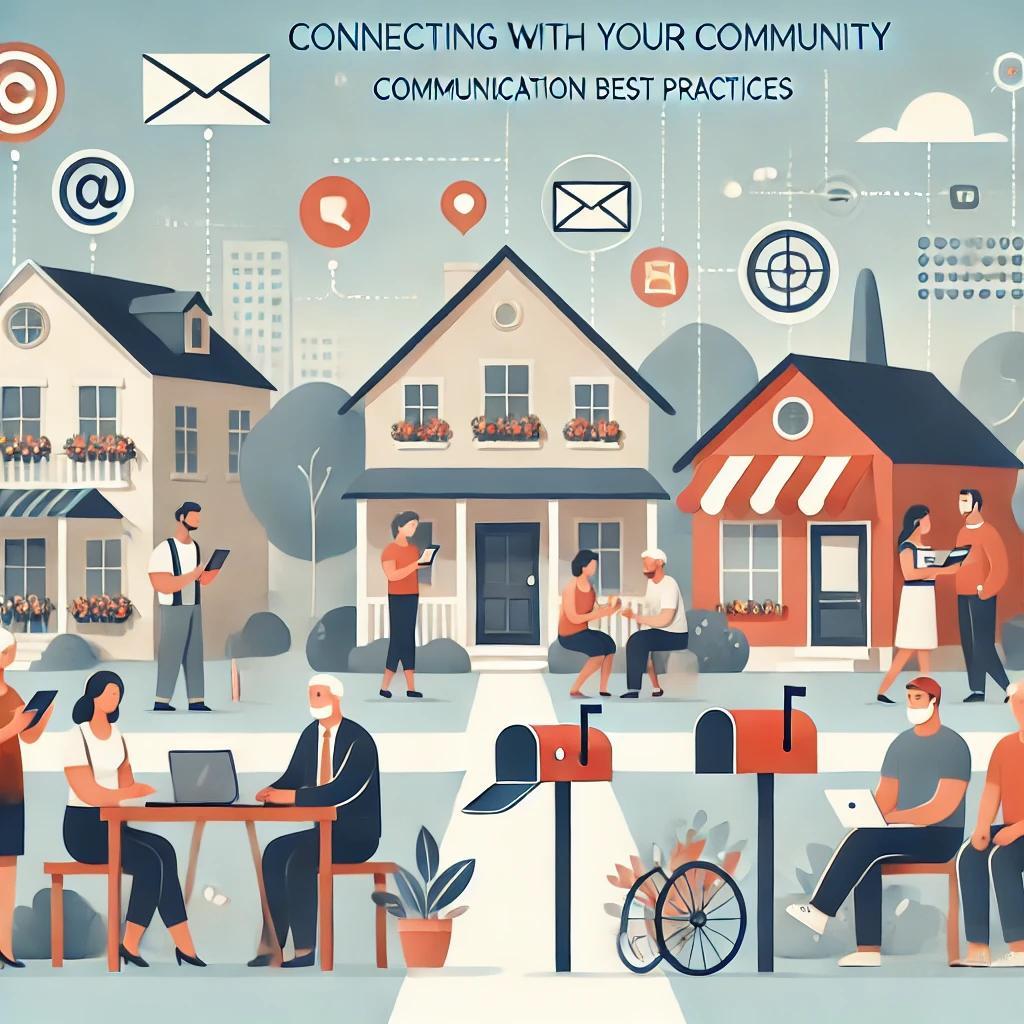Best Practices for Effective Communication Within Your Community

Building strong relationships between board members, residents, and property management companies significantly enhances community engagement and ensures everyone stays informed. A successful communication strategy relies on four key components that effectively connect with all community members.
Channels
Selecting the right communication channels is crucial for reaching residents effectively. People prefer different methods of communication, so utilizing a variety of tools ensures broader outreach. Channels such as email, resident portals, community websites, newsletters, text messages, phone calls, flyers, bulletin boards, and board meetings are available options. Familiarizing yourself with these tools can help you identify opportunities and fill communication gaps. Here are some tips for optimal use:
Use email as the primary tool – It's widely used and easy to track.
Update the resident portal or community website regularly – These platforms keep residents informed about events, activities, policy changes, emergencies, and provide access to essential forms and documents.
Employ social media strategically – Announce community events and meetings here, but ensure close monitoring, establish a clear policy, and assign someone to manage the platform.
Utilize a mass communication tool for efficiency.
Roles
Assigning clear roles in the communication process prevents overlap and ensures nothing is missed. It provides clarity on the responsibilities of both property managers and board members. Roles can be distributed based on:
Task – Assign roles according to communication type, including newsletters, emails, website, phone, and text communications.
Topic – Designate roles by subject matter, such as emergency preparedness, financial issues, property upgrades, events, and activities.
Skillset – Leverage the talents within your team by assigning roles like writer, designer, editor, or social media manager.
If certain channels require training for board members or property managers, consider organizing brief sessions. It's also essential to agree on content, tone, and messaging to ensure cohesive communication.
Process
Collaborating with board members and property managers at the planning stage can save time and streamline processes. Consider these questions when planning communications:
What information needs to be communicated?
What's the purpose of each message?
When should each message be sent?
Who will draft the content?
Which channels are most suitable for each message?
Who is responsible for sending them?
Messages should focus on a single subject and be concise, based on residents' current understanding. Additional suggestions include:
Communicate consistently – Regular updates prevent misinformation and rumors. Involve the property manager or form a communication committee to maintain steady information flow without overwhelming the board.
Verify facts – Ensure accuracy in all communications to avoid spreading incorrect information.
Maintain transparency – Open dialogue fosters trust, encourages participation, and facilitates compliance. Some boards may hesitate to share certain details due to litigation concerns, but honesty leads to greater acceptance from residents, even for unfavorable news.
Create dialogue – Residents should have opportunities to express concerns and share opinions. Allow time for discussions during board meetings and distribute surveys to gauge residents' priorities. However, clarify that board action occurs during meetings and only on agenda items.
Prioritize information – While conveying all relevant information is ideal, focus on high-priority topics first, especially with limited time or resources. These include meeting notices, financial details, and policy changes.
Support
A property management company should adeptly handle resident communications, with the board's consent. Community managers should always inform board members before reaching out to residents directly. Best practices for effective communication include:
Providing 24/7 customer care support and an online self-service platform, facilitating seamless community business and information access for residents.
Creating a welcome packet for new residents, containing association rules, contact details, and property-specific information.
Offering tutorials on using the online platform for communication with managers and the board, included in the welcome packet.
Proactively sharing new laws and changes impacting the community and gathering feedback to enhance services. Providing board training to develop better board members.
The effectiveness of your community largely depends on the communication between the board and property managers with residents. Adhering to these recommendations will help create an informed and efficiently functioning community.





